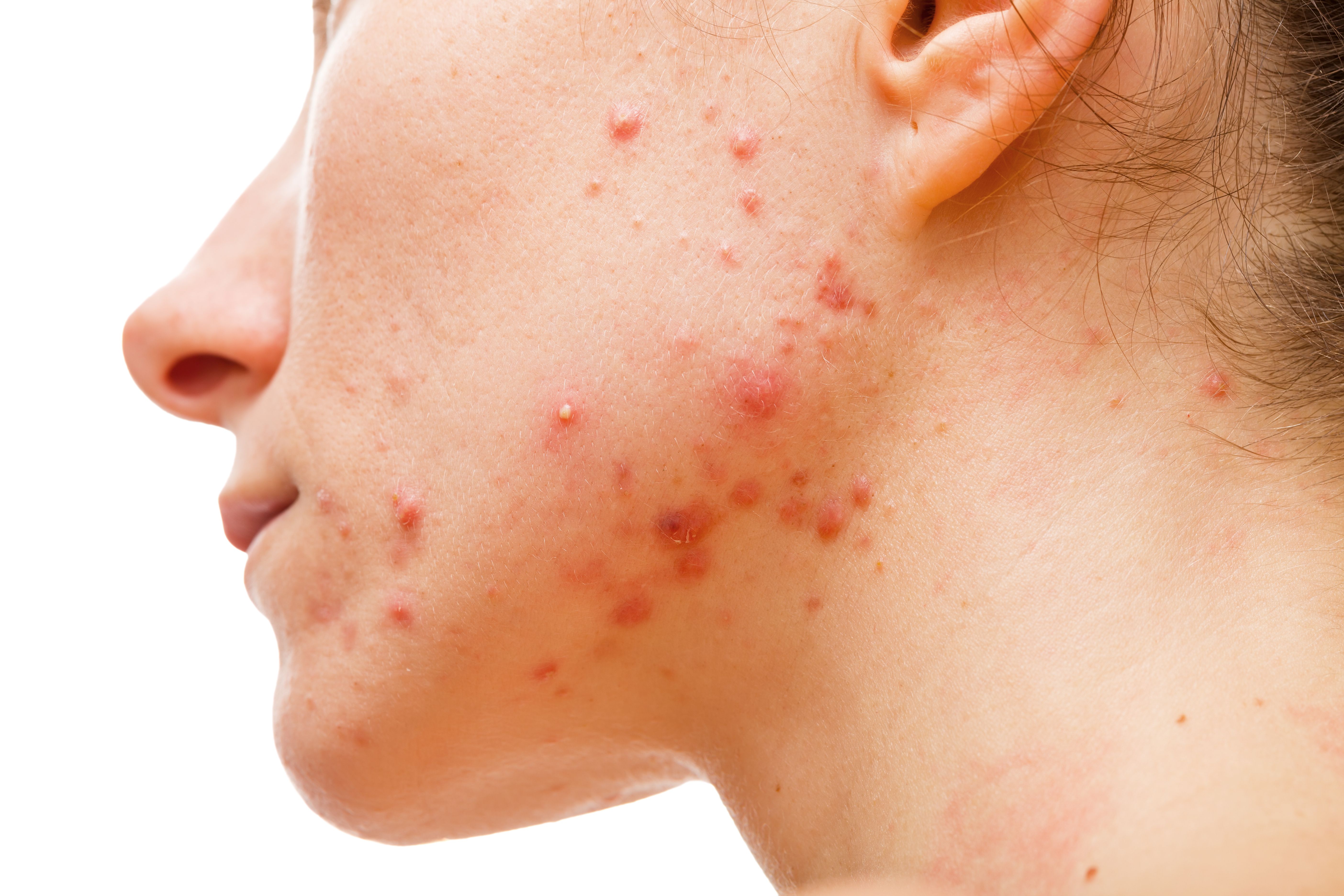- Sustainability
- DE&I
- Pandemic
- Finance
- Legal
- Technology
- Regulatory
- Global
- Pricing
- Strategy
- R&D/Clinical Trials
- Opinion
- Executive Roundtable
- Sales & Marketing
- Executive Profiles
- Leadership
- Market Access
- Patient Engagement
- Supply Chain
- Industry Trends
Study Highlights Need for Pharma Industry to Address Stigmatization of Acne
JAMA Network study evaluates current attitudes toward individuals with acne with a call for pharma companies to focus efforts on helping to overcome these stigmas.
Image credit: Ocskay Bence | stock.adobe.com

Currently, little is known about the magnitude of stigmatizing attitudes toward individuals with acne. In a recent study published by the JAMA Network, researchers aimed to explore the degree of stigma toward individuals with acne and whether these attitudes vary based on characteristics of the individuals with acne or of the survey participants. In order to find an efficient answer, the authors employed a cross-sectional internet survey using digitally enhanced portraits to assess stigmatizing attitudes, recruiting a total of 1357 respondents in the US, with a focus on acne-related attitudes.1
To perform the survey, the authors provided four stock portraits of adults who varied in sex and skin tone and who were digitally enhanced to have acne, with one of 12 pictures being presented to participants at random. Answers were evaluated based on the pictured individual, such as desire for social distance and stereotype endorsement.1
The survey found that participants were highly likely to promote stereotypes typically associated with individuals with acne. Specifically, these individuals were more likely to rate those with severe acne as having poor hygiene, being unattractive, unintelligent, unlikable, immature, and untrustworthy. Additionally, stigma was more pronounced for individuals with severe acne and those with dark skin tones.1
According to a recent study published in an EADV Congress press release, the stigma is considerably worse for females with acne issues, with a reported 10% increase in adult acne among women worldwide, which commonly affects the jawline and chin but can appear on any part of the face. In adults, this condition is known to have serious consequences, including a psychological impact, low self-esteem, social isolation, and depression. Despite genetics being the most prominent risk factor, other influences such as stress, hormones, and diet can heighten an individual’s risk of developing acne.2
"With over a decade of experience in the field, I've consistently seen that adult female acne leads to more social challenges compared to adolescent acne,” explained Marek Jankowski, MD, in a press release. “The findings therefore reaffirm this. However, what was truly surprising was images depicting generalized acne, covering a larger area with more lesions, received more positive ratings than images featuring adult female acne occurring in the ‘U-zone.’"3
“Treatment needs to focus on improving the quality of life of patients, not just reducing the surface area impacted by the acne. Unfortunately, this is not currently a goal when treating acne, with therapeutic guidelines still advocating for certain treatment modalities based on the number of lesions, irrespective of their location. Unsurprisingly, acne severity scores do not correlate with quality-of-life scores in patients with acne,” Jankowski continued.
The authors of the JAMA study expressed the belief that their findings build on the existing literature demonstrating increased stigmatizing attitudes toward individuals with dermatologic conditions.1
“Our findings expand on understanding of the quality-of-life impairment associated with acne, suggesting that stigmatizing attitudes might result in negative effects on relationships, education, and employment opportunities,” the authors wrote. “There was greater endorsement of stigmatizing attitudes and stereotypes for the image sets picturing acne among individuals with dark skin, suggesting that skin tone might modulate the degree of stigma. Whether this observed difference is secondary to pathophysiologic variation and disease expression across skin tones or due to underlying racism or colorism requires further study. These differences could result in disparities with respect to social and economic outcomes, particularly given differences in access to treatment by race and ethnicity.”
The study concludes by highlighting that it remains vital to address stigmatizing attitudes toward individuals with acne, particularly focusing on severity and skin tone, and suggests pharma companies focus heavier on contributing to overcome these stigmas.
References
1. Evaluation of Stigma Toward Individuals With Acne. JAMA Network. December 6, 2023. Accessed December 8, 2023. https://jamanetwork.com/journals/jamadermatology/fullarticle/2812215?guestAccessKey=39c38e87-cb87-4f98-a6af-ea7cacac8823&utm_source=For_The_Media&utm_medium=referral&utm_campaign=ftm_links&utm_content=tfl&utm_term=120623
2. Study reveals significant stigma associated with female adult acne. EADV Congress. October 11, 2023. Accessed December 8, 2023. https://eadvcongress2023.org/study-reveals-significant-stigma-associated-with-female-adult-acne/
3. Uncovering the emotional scars: Study reveals significant stigma associated with female adult acne. EurekAlert. News release. Published October 11, 2023. Accessed December 14, 2023. https://www.eurekalert.org/news-releases/1003675
Cell and Gene Therapy Check-in 2024
January 18th 2024Fran Gregory, VP of Emerging Therapies, Cardinal Health discusses her career, how both CAR-T therapies and personalization have been gaining momentum and what kind of progress we expect to see from them, some of the biggest hurdles facing their section of the industry, the importance of patient advocacy and so much more.
